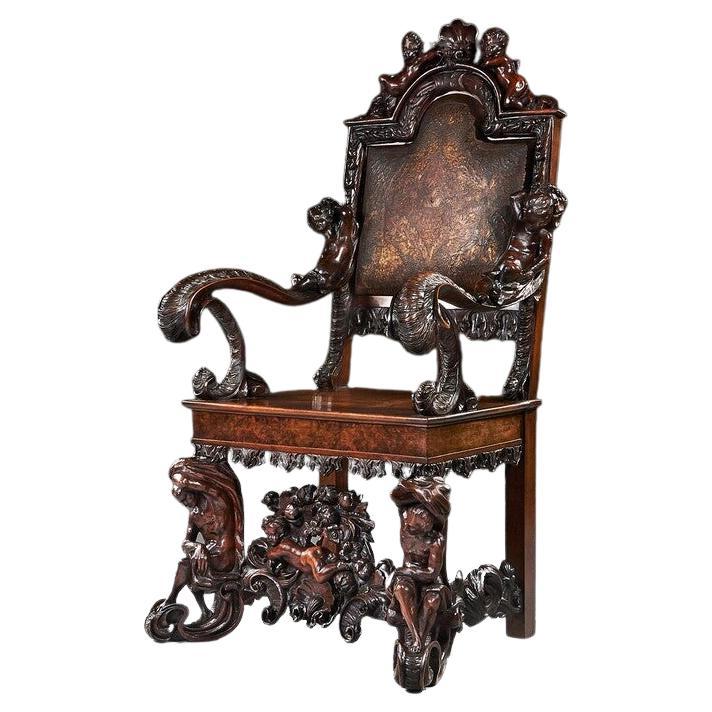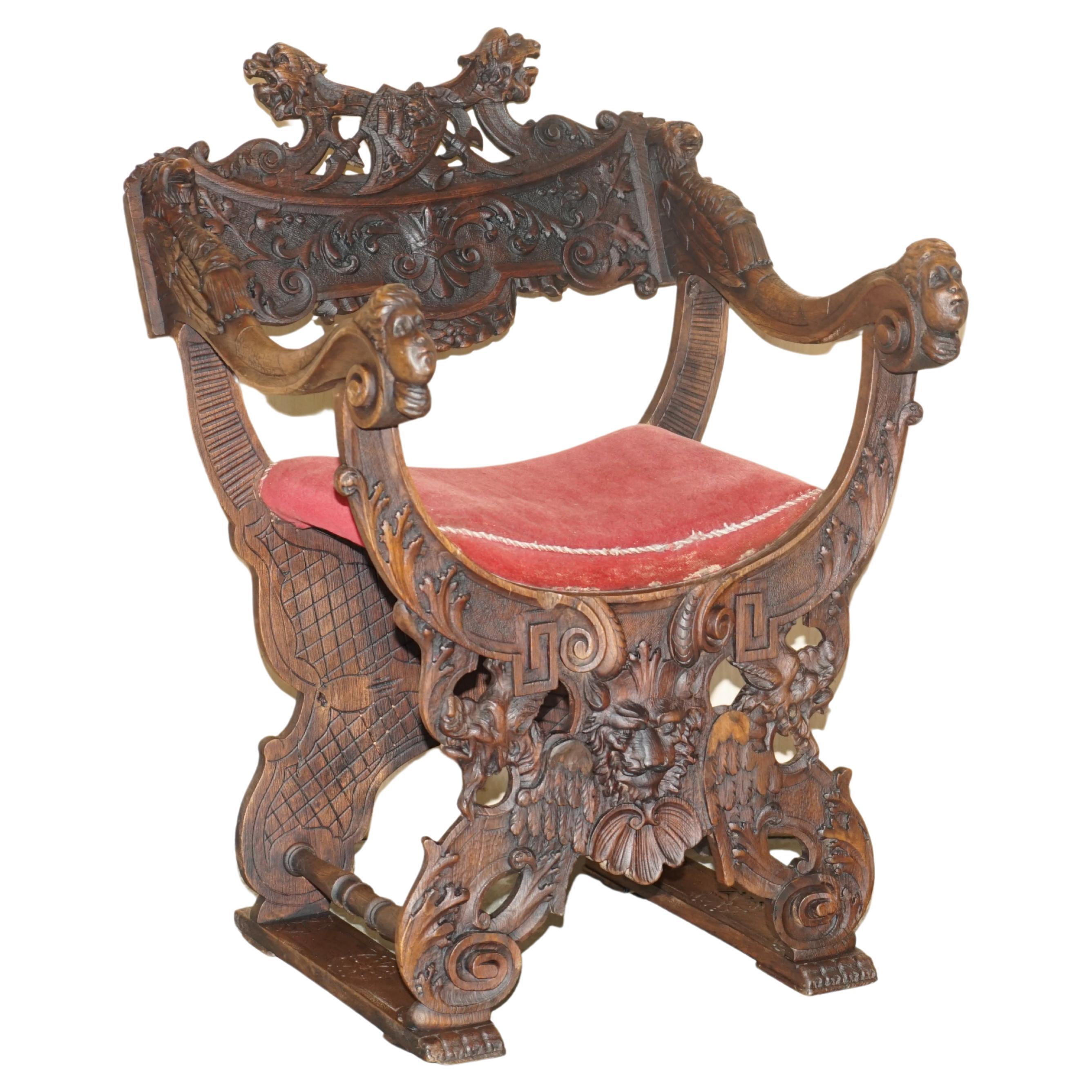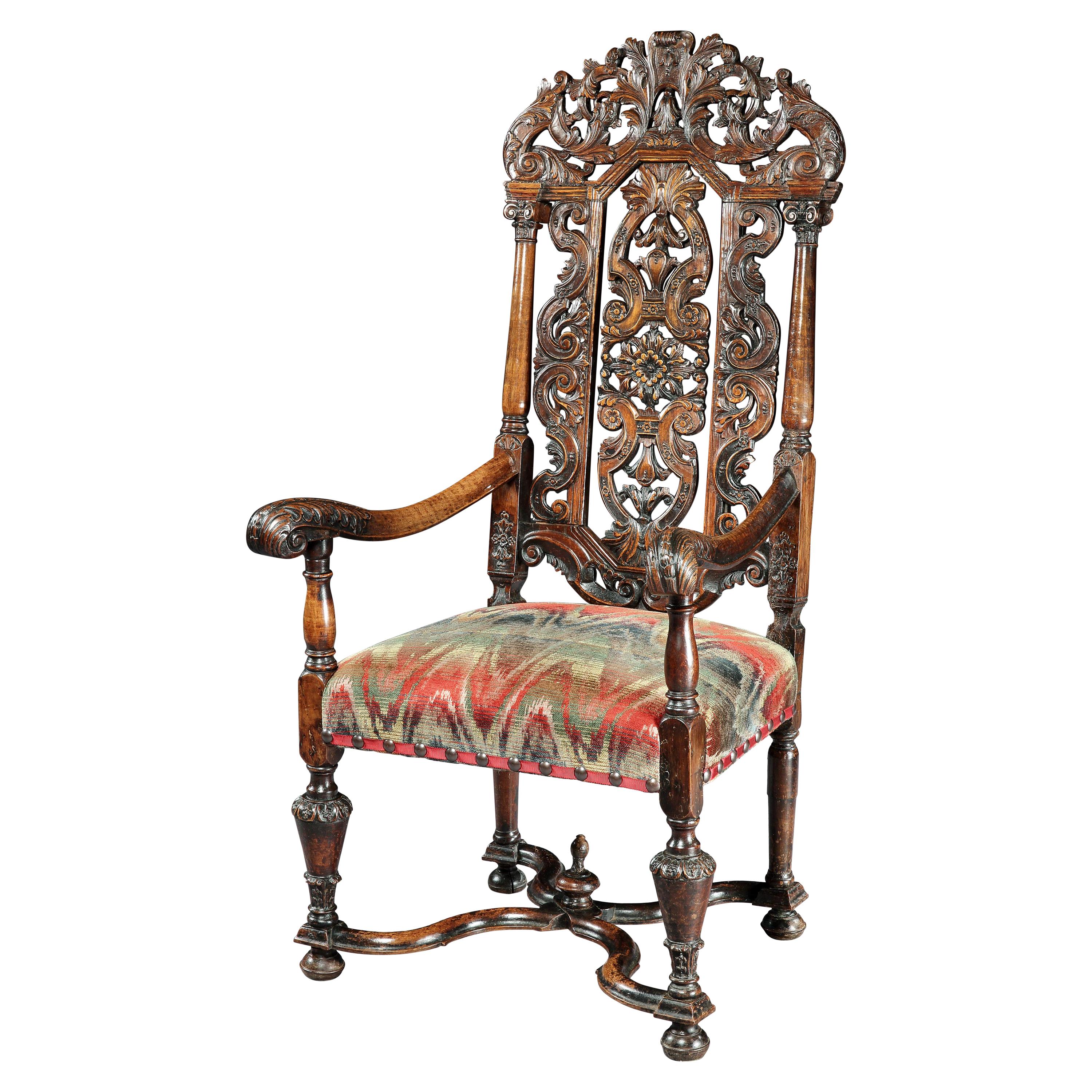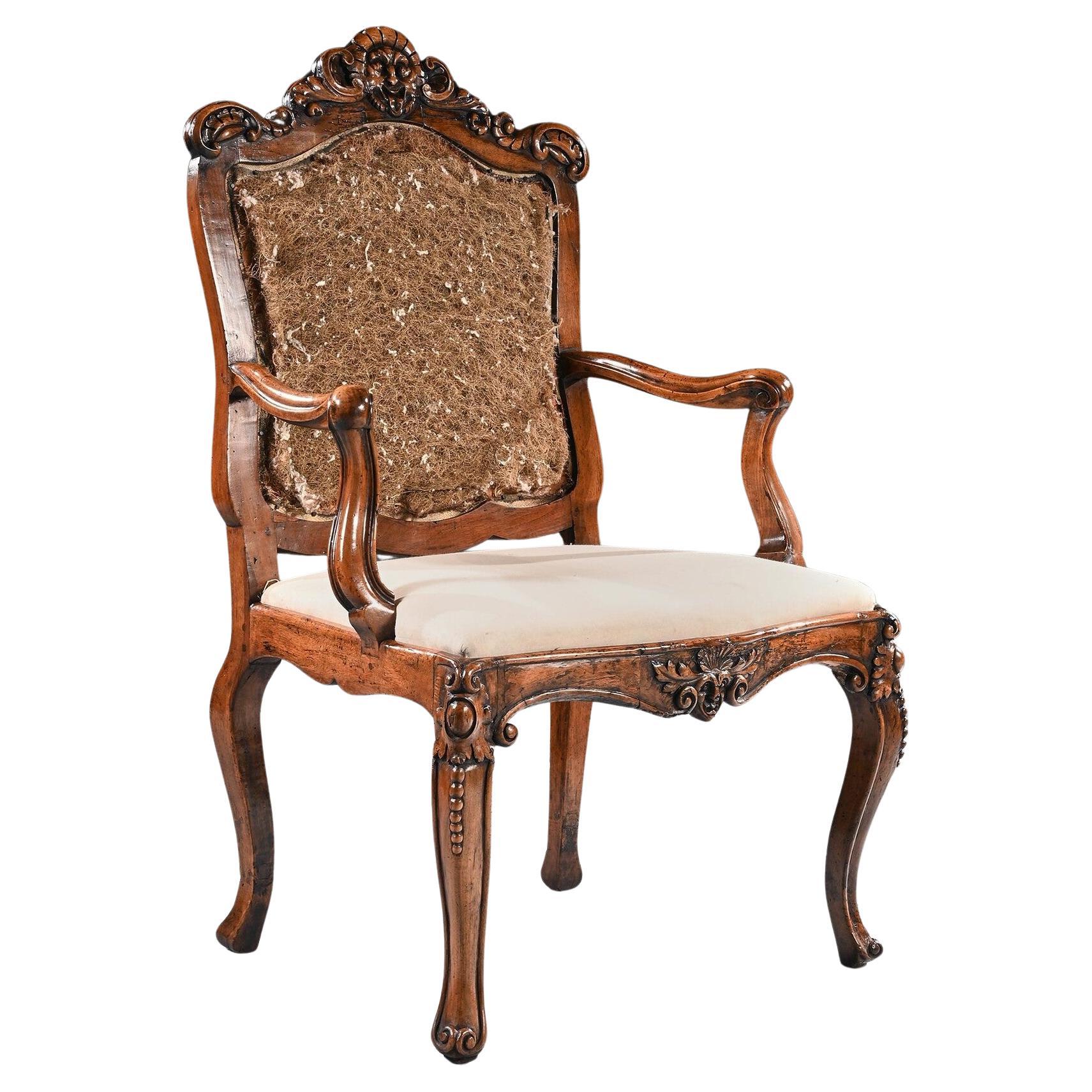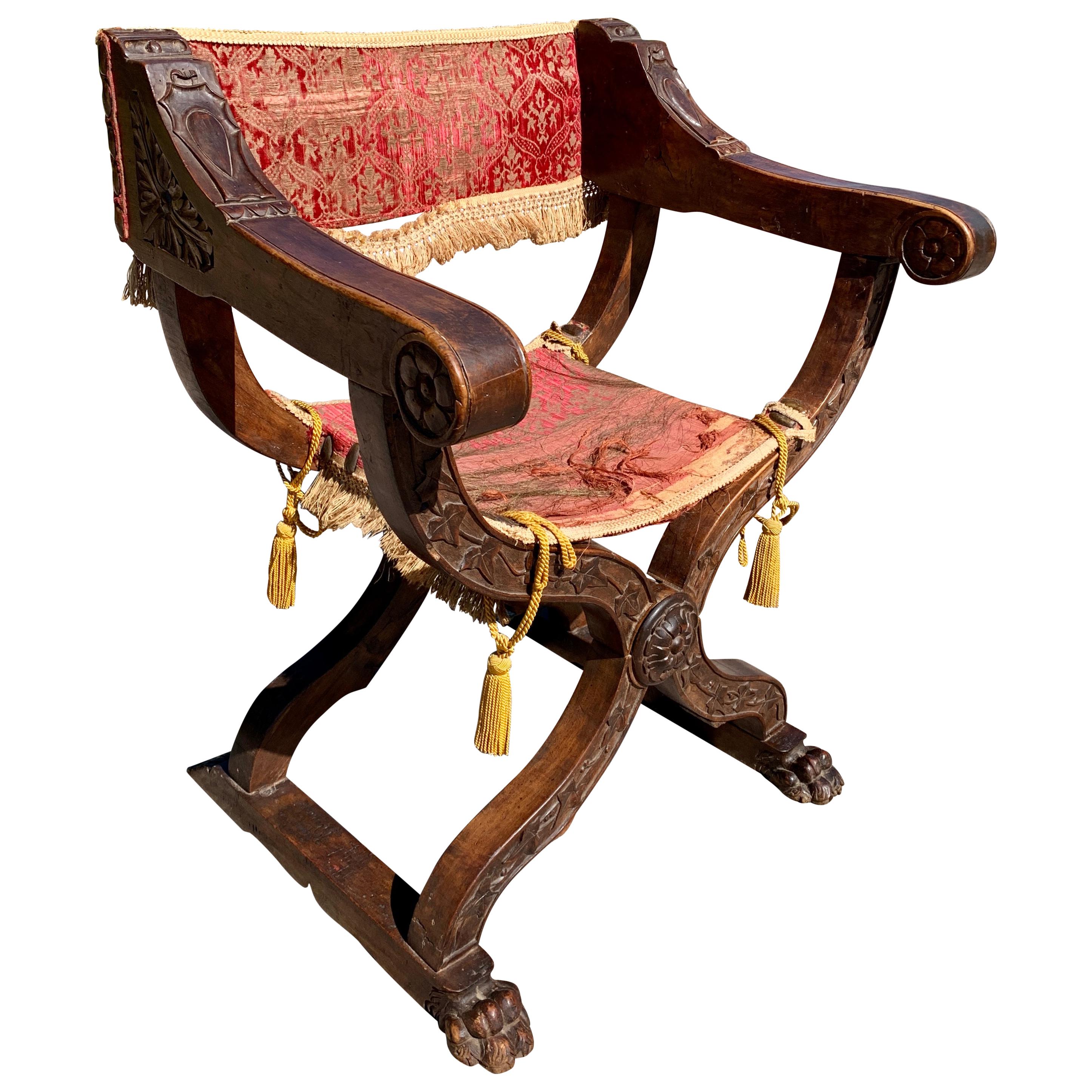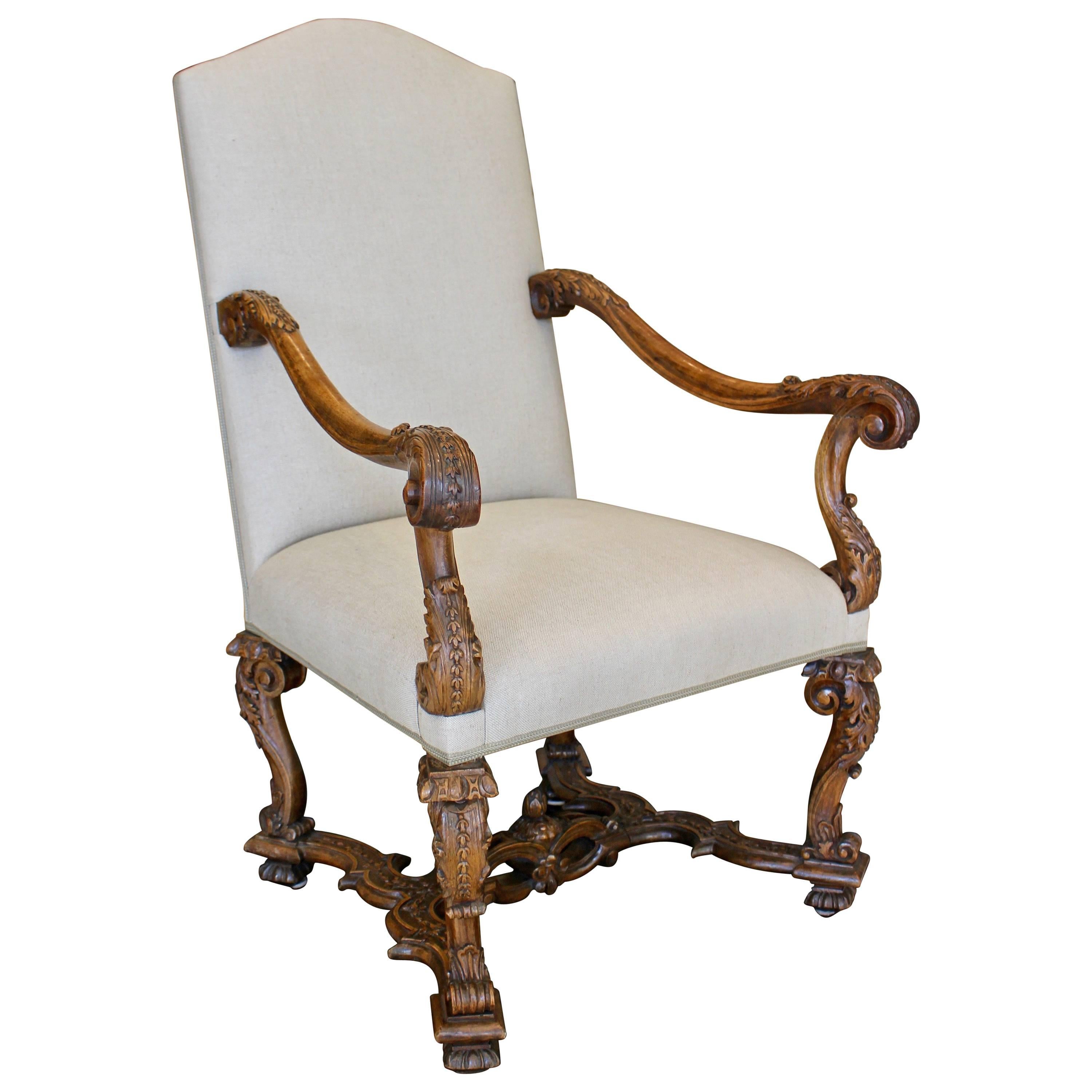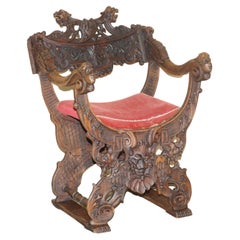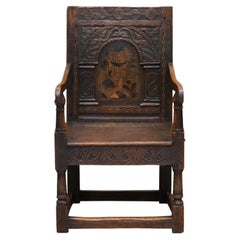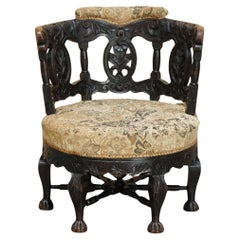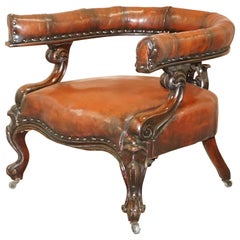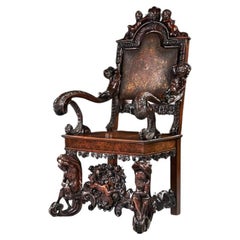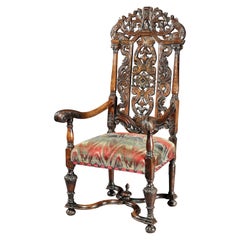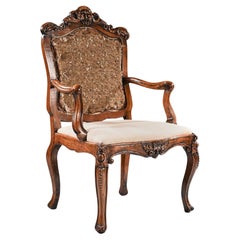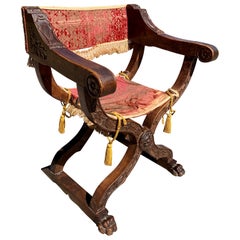Items Similar to Original 17th Century Andrea Brustolon Hand Carved Italian Walnut Armchair
Want more images or videos?
Request additional images or videos from the seller
1 of 21
Original 17th Century Andrea Brustolon Hand Carved Italian Walnut Armchair
$11,509.40
$16,44230% Off
£8,400
£12,00030% Off
€9,798.15
€13,997.3530% Off
CA$15,765
CA$22,521.4330% Off
A$17,534.12
A$25,048.7530% Off
CHF 9,155.77
CHF 13,079.6830% Off
MX$213,371.61
MX$304,816.5930% Off
NOK 116,933.20
NOK 167,047.4330% Off
SEK 109,662.71
SEK 156,661.0230% Off
DKK 73,127.33
DKK 104,467.6230% Off
Shipping
Retrieving quote...The 1stDibs Promise:
Authenticity Guarantee,
Money-Back Guarantee,
24-Hour Cancellation
About the Item
We are delighted to offer for sale this stunning original 17th century attributed to Andrea Brustolon hand carved Italian walnut armchair with Cherubs throughout
This chair is absolutely stunning, its hand carved from head to toe, comes complete with the original seat pad and heavily worn upholstery which has perished in places. The rear cushion and seat pad are both easily removable
We have lightly cleaned waxed and polished the frame from top to bottom, the upholstery has been tidied up but mostly left alone, the chair can be reupholstered at the new owners cost and to their own specification upon request
Andrea Brustolon (20 July 1662 – 25 October 1732) was an Italian sculptor in wood. He is known for his furnishings in the Baroque style and devotional sculptures.
He was trained in a vigorous local tradition of sculpture in his native Belluno, in the Venetian terraferma, and in the studio of the Genoese sculptor Filippo Parodi, who was carrying out commissions at Padua and at Venice (1677). He spent the years 1678-80 at Rome, where the High Baroque sculpture of Bernini and his contemporaries polished his style. Apart from that, the first phase of Brustolon's working career was spent in Venice, 1680–1685. Brustolon is documented at several Venetian churches where he executed decorative carving in such profusion that he must have quickly assembled a large studio of assistants. As with his contemporary in London, Grinling Gibbons almost all the high quality robust Baroque carving in Venice has been attributed to Brustolon at one time or another. In the Venetian Ghetto, at the Scola Levantina,[1] Brustolon provided the woodwork for the synagogue on the piano nobile, where the carved, canopied bimah is supported on Solomonic columns, which Brustolon had seen in Bernini's baldacchino in the Basilica of St Peter's.
His furniture included armchairs with figural sculptures that take the place of front legs and armrest supports, inspired by his experience of Bernini's Cathedra Petri. The gueridon, a tall stand for a candelabrum, offered Brustolon unhampered possibilities for variations of the idea of a caryatid or atlas: the familiar Baroque painted and ebonized gueridons, endlessly reproduced since the eighteenth century, found their models in Brustolon's work.
His secular commissions from Pietro Venier, of the Venier di San Vio family (a suite of forty sculptural pieces that can be seen in the Sala di Brustolon of the Ca' Rezzonico, Venice), from the Pisani of Strà, and from the Correr di San Simeone families encourage the attribution to him of some extravagantly rich undocumented moveable furniture. Andrea Brustolon's elaborate carved furniture aspired towards the condition of sculpture, such as the Dutch bases for console tables which look like enlargements of the work of the two Van Vianens, Paulus and Adam, perhaps the greatest Dutch silversmiths of the period. These carved pieces display the baroque tendency to develop a form three-dimensionally in space.
Brustolon's walnut, boxwood and ebony pieces transcend ordinary functional limitations of furniture; they are constructed of elaborately carved figures. The framework of Brustolon's chairs, side tables and gueridons were carved as gnarled tree branches, with further supports of putti and moors carved in ebony. Backrests of the chairs, which were never touched in the rigidly upright posture that contemporary etiquette demanded, were carved with allegories of vanity, fire and music, etc.
The most extravagant piece delivered for Pietro Venier was a large side table and vase-stand of box and ebony, designed as a single ensemble to display rare imported Japanese porcelain vases. The eclectic allegories include Hercules with the Hydra and Cerberus, moors and reclining river-gods
For the Correr, less extrovert chairs bear female nudes extended along the armrests. For the Pisani, he carved a suite of twelve chairs (now at the Palazzo Quirinale) with flowers, fruit, leaves and branches to symbolize the twelve months of the year. Work by Brustolon is at the Villa Pisani at Stra.
In 1685 Brustolon returned to the house where he was born at Belluno, and from that time devoted himself mainly to tabernacles and devotional sculptures in walnut, boxwood or ivory. His polychromed ivory Corpus from a crucifix is in the Museo Civico di Belluno, which preserves some of Brustolon's preparatory drawings for frames to be carved with putti displaying emblems. A pair of boxwood sculptures, The Sacrifice of Abraham and Jacob Wrestling with the Angel, integral with scrolling barocchetto stands, were in the collection of Justus Liebig (Liebigshaus, Frankfort). An altarpiece, c. 1720, is at the Victoria and Albert Museum, London.
He died in Belluno in 1732.
Dimensions:
Height:- 91.5cm
Width:- 71.5cm
Depth:- 71cm
Please note all measurements are taken at the widest point.
Delivery or collection:
This item is available for collection from our Wimbledon warehouses.
Please be sure to include which item you would like to buy as the price is determined on size and distance.
Condition:
Please view the very detailed pictures as they form part of the description around condition
Please note vintage period and original items such as leather seating will always have natural patina in the form of cracking creasing and wear, we recommend regular waxing to ensure no moisture is lost, also hand dyed leather is not recommended to sit in direct sunlight for prolonged periods of time as it will dry out and fade.
- Attributed to:Andrea Brustolon (Designer)
- Dimensions:Height: 36.03 in (91.5 cm)Width: 28.15 in (71.5 cm)Depth: 27.96 in (71 cm)
- Style:Baroque (Of the Period)
- Materials and Techniques:
- Place of Origin:
- Period:
- Date of Manufacture:17th Century
- Condition:Wear consistent with age and use. Minor structural damages. Minor fading.
- Seller Location:West Sussex, GB
- Reference Number:1stDibs: LU2823314131201
About the Seller
4.7
Platinum Seller
Premium sellers with a 4.7+ rating and 24-hour response times
Established in 2012
1stDibs seller since 2017
1,995 sales on 1stDibs
Typical response time: <1 hour
- ShippingRetrieving quote...Shipping from: West Sussex, United Kingdom
- Return Policy
Authenticity Guarantee
In the unlikely event there’s an issue with an item’s authenticity, contact us within 1 year for a full refund. DetailsMoney-Back Guarantee
If your item is not as described, is damaged in transit, or does not arrive, contact us within 7 days for a full refund. Details24-Hour Cancellation
You have a 24-hour grace period in which to reconsider your purchase, with no questions asked.Vetted Professional Sellers
Our world-class sellers must adhere to strict standards for service and quality, maintaining the integrity of our listings.Price-Match Guarantee
If you find that a seller listed the same item for a lower price elsewhere, we’ll match it.Trusted Global Delivery
Our best-in-class carrier network provides specialized shipping options worldwide, including custom delivery.More From This Seller
View AllOriginal 19th Century Heavily Hand Carved Italian Walnut Throne Armchair
Located in West Sussex, Pulborough
We are delighted to offer for sale this stunning original 19th century hand carved Italian walnut armchair with ornate detailing th...
Category
Antique 19th Century Italian Victorian Armchairs
Materials
Walnut
17th Century Charles I English Oak Wainscot Armchair Primate Design Hand Carved
Located in West Sussex, Pulborough
We are delighted to offer for sale this original early 17th century Charles I Wainscot armchair.
A good early original piece, hand carved, very naïve but at the time this would ha...
Category
Antique Early 17th Century European Renaissance Armchairs
Materials
Oak
FINE ANTIQUE CARVED ViCTORIAN BURGERMEISTER CHAIR 17TH CENTURY JACOBEAN DESIGN
Located in West Sussex, Pulborough
Royal House Antiques
Royal House Antiques is delighted to offer for sale highly decorative and exquisitely made Antique Victorian circa 1870 Burgermeister chair based on a 17th Jacobean...
Category
Antique 1870s English High Victorian Chairs
Materials
Upholstery, Oak
Rare Fully Restored Regency Show Framed Carved Hardwood Brown Leather Armchair
Located in West Sussex, Pulborough
We are delighted to offer for sale this stunning fully restored cigar brown hand dyed leather Regency show framed armchair
A very good looking and nicely refurbished piece. This i...
Category
Antique 1810s English Regency Armchairs
Materials
Leather
$2,735 Sale Price
30% Off
Stunning Pair of Hand Carved Italian Walnut Antique circa 1860 Throne Armchairs
Located in West Sussex, Pulborough
We are delighted to offer for sale this lovely pair of original Italian circa 1860 hand carved walnut throne armchairs with period upholstery
A wonderfully decorative and super or...
Category
Antique 1860s Italian High Victorian Armchairs
Materials
Walnut
$5,141 Sale Price / set
25% Off
ANTIQUE THOMAS CHIPPENDALE CLAW & BALL CARVED BERGERE BROWN LEATHER ARMCHAiR
By Thomas Chippendale
Located in West Sussex, Pulborough
Royal House Antiques
Royal House Antiques is delighted to offer for sale this very rare and highly collectable, Circa 1900-1920 Thomas Chippendale style carved with Claw & Ball feet and hand dyed brown leather seat armchair...
Category
Antique Early 1900s English Edwardian Bergere Chairs
Materials
Leather, Hardwood
You May Also Like
Exhibition Quality Italian 19th Century Carved Walnut Armchair After Andrea B
Located in Benington, Herts
An exhibition quality grand Italian walnut armchair carved in the Baroque style after Andrea Brustolon, possibly by the great Florentine carver Luigi Frullini...
Category
Antique 1850s Italian Armchairs
Materials
Walnut
Armchair, Walnut, Carved, Upholstered, Daniel Marot, Flemish, 17 Century Baroque
Located in BUNGAY, SUFFOLK
A fine, large, late 17th century, Flemish, open armchair in the style of Daniel Marot with an upholstered seat
This fine, armchair is an, unusually, large size and the carving is of exceptional quality reflecting the status of the owner it was made for. It is sturdy and in usable condition. Chairs of this type, with tall, intricately carved backs, were placed in rows against a wall forming part of the decoration of a room. The carving of the back of this chair is French in style and was based on decorative prints by Daniël Marot
The cresting carved with a profusion of acanthus leaf scrolls. The back with fine, pierced carving. The mid-section with a central flowerhead with scrolled shields above and below ornamented with flowerheads acanthus leaf crestings. Two pairs of carved ‘S’ scrolls ornamented with acanthus leaves either side. The tapering turned sections surmounted by ionic capitals and supporting back of the scroll arms carved with acanthus leaf ornament. The front arms supported by baluster and tapering turned sections ornamented with acanthus leaf carving. The legs joined by a shaped ‘H’ stretcher with central finial, on bun feet. The upholstered seat reupholstered in a bargello woven in tones of blue, green, red and gold faced with braid and brass studwork.
The back of the chair has an incredible, 19th century, oak support from the cresting to halfway down the back, which has been beautifully carved to conform with the open sections of the back, and two braces down the length of the back. There are also two oak supports behind seat blocks at the top of the legs. These repairs are sensitive to the model of chair and have become part of its character and features in their own right and they are very interesting from a conservation history perspective. There are two old repairs to a small break in the cresting on the right hand side and the hairline cracks are visible, an old repair to a small break in the top right of the central splat with a small piece added and a visible hairline crack. The right side of the back has noticeable worm damage on the right seat block which is probably the root cause of the break on the block on this side from impact as the chair probably fell backwards at some point and either onto its right side or it hit something on that side and the block weakened by worm gave way as the damage to the chair is localised on the far right side. Because the backs are high on these Daniel Marot chairs they are top heavy and invariably do have damage to the backs and crestings from impact damage so this is not unusual. The right block has been repaired thoroughly and is stable and there is no live worm in the chair. It would be possible to disguise these repairs but I have left them as they are consistent with the 19th century date of the supports and conform with museum standards. A full set of photographs...
Category
Antique 1690s Dutch Baroque Armchairs
Materials
Walnut
Mid 18th Century Italian Rococo Armchair in Walnut With Extravagantly Carved
Located in Benington, Herts
Mid 18th Century Italian Rococo Armchair in Walnut with Extravagantly Carved Head Rail
Italian Circa 1760
This beautiful armchair is executed in walnut and, in its basic form, is h...
Category
Antique Mid-18th Century Italian Rococo Armchairs
Materials
Walnut
Italian 19th Century Renaissance Style Dante Walnut Armchair
Located in Haddonfield, NJ
19th century Italian Dante armchair.
Beautiful walnut Savonarola armchair with ornately carved decoration throughout. This stately x-base legged chair has rich velvet upholstery, golden fringe and tasseled seats. It is as functional as it is comfortable. Making a fine statement in any area of your home, the walnut folding chair...
Category
Antique 1870s Italian Renaissance Armchairs
Materials
Velvet, Walnut
Baroque Style Mid 19th Century Carved Walnut Armchair with Scrolled Motifs
Located in Palm Desert, CA
A Baroque style carved walnut camelback armchair from the mid 19th century with scrolled arms and legs, cross stretcher and new upholstery. This Baroque style fauteuil features a slightly slanted camel back, from which two exquisite scrolled open arms emerge. Delicate acanthus leaves adorn the surface of these tall arms, gently leading the eye to the splayed, scrolled extremities. The rectangular upholstered seat is raised on four richly carved Flemish scroll...
Category
Antique 19th Century Baroque Armchairs
Materials
Walnut, Upholstery
Grand German Late 17th Century Baroque Walnut Armchair
Located in Worpswede / Bremen, DE
Fine tall German late 17th century Baroque walnut throne armchair with a rectangular arched padded back and seat covered in 17th century Gobelin depicting ‘Susanna and the Elders’ wi...
Category
Antique Late 17th Century German Baroque Armchairs
Materials
Tapestry, Walnut
$10,792 Sale Price
53% Off
More Ways To Browse
Armchair Bear
Baroque Carved Armchairs
17th Century Venetian
Carved Piano
Carved Caryatid
17th Century Cherub
Italian Baroque Armchair
17th C Italian Furniture
17th Century Carved Chair
Carved Tree Chair
Velvet Fruit
17th Century Dutch Table
Antique Italian Porcelain Flowers
Venetian Armchair
17th Century Wood Chairs
Italian Leather Recliner
Italian Walnut Extending Table
Carved Japanese Chair
